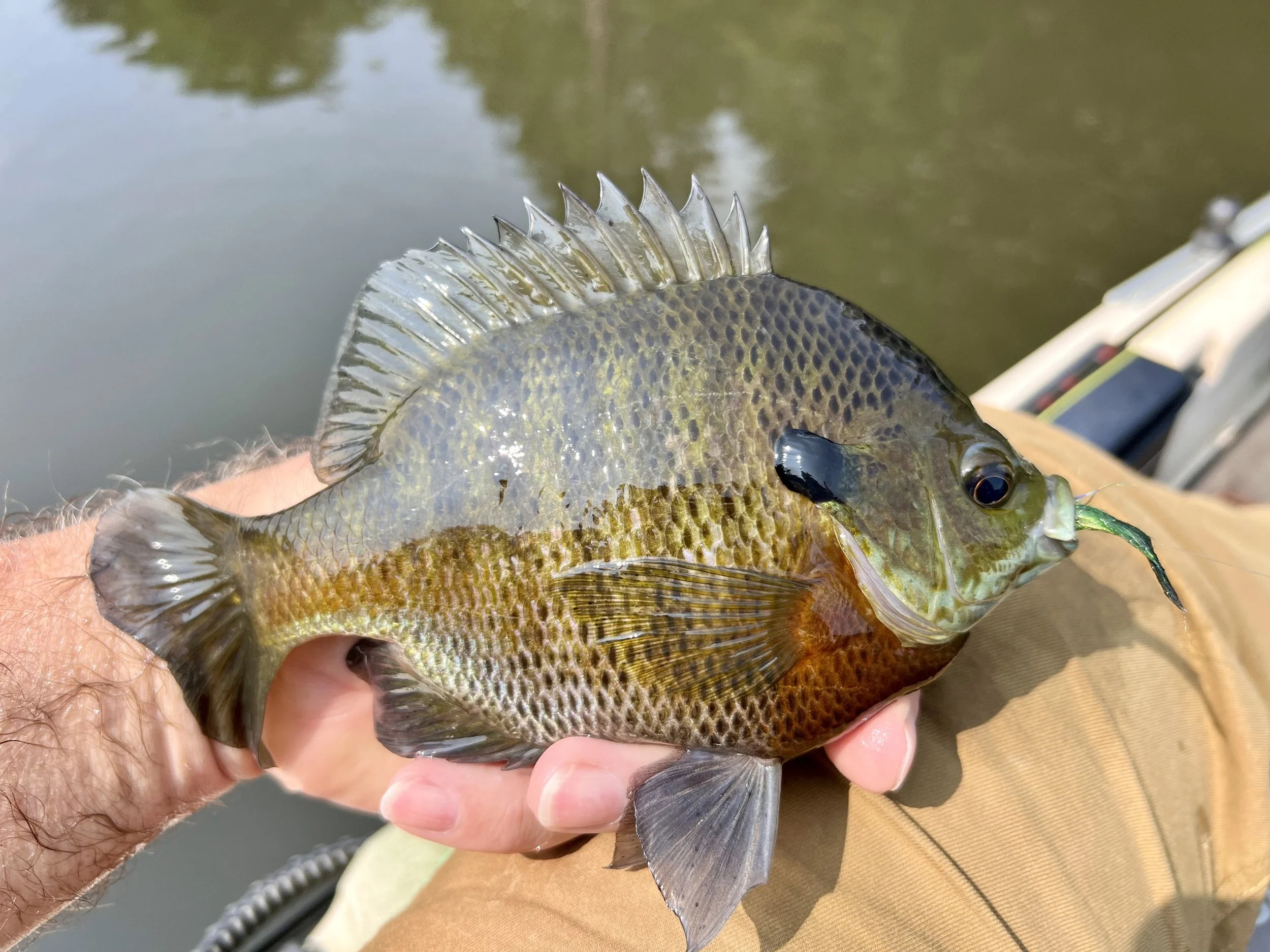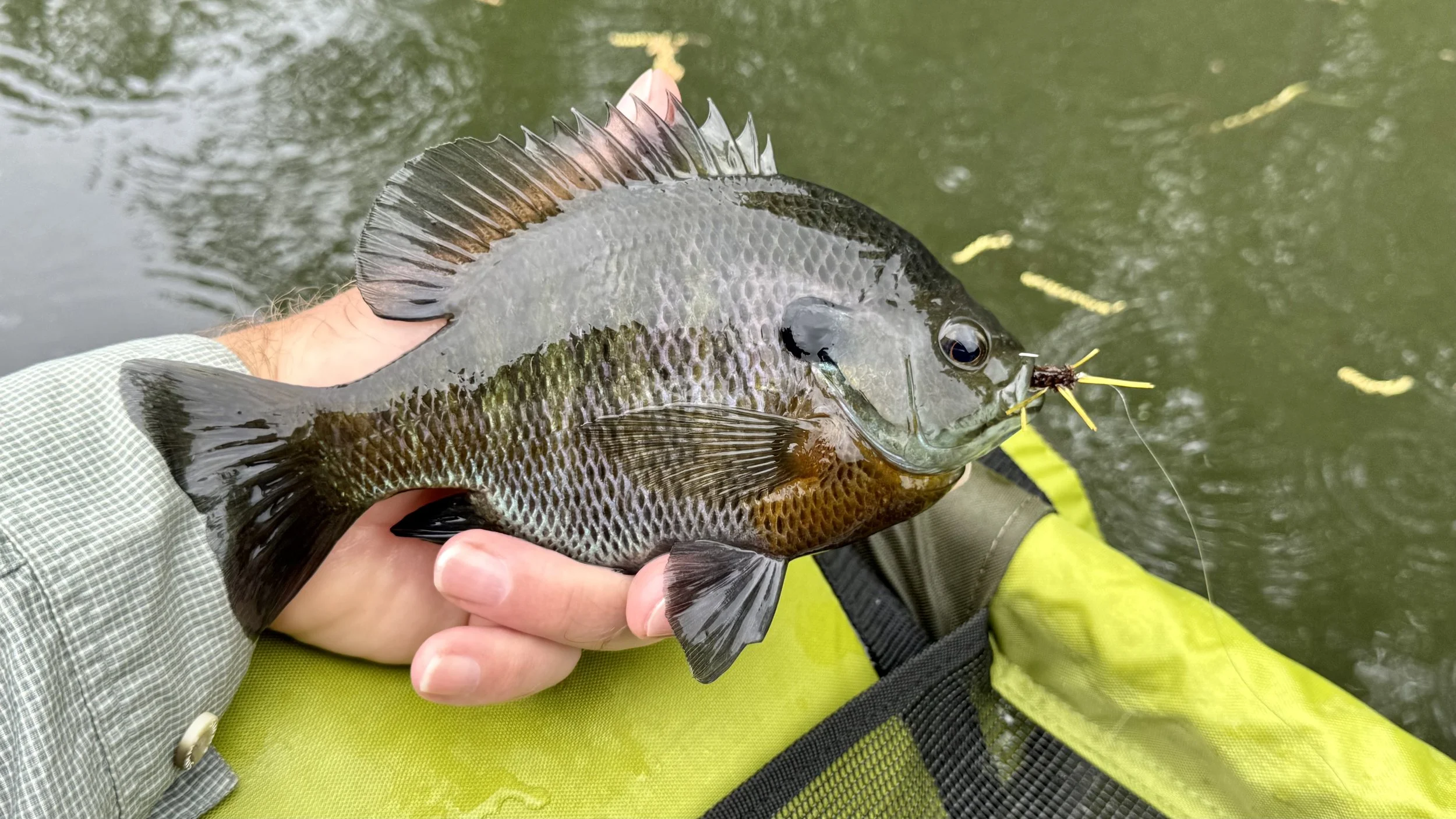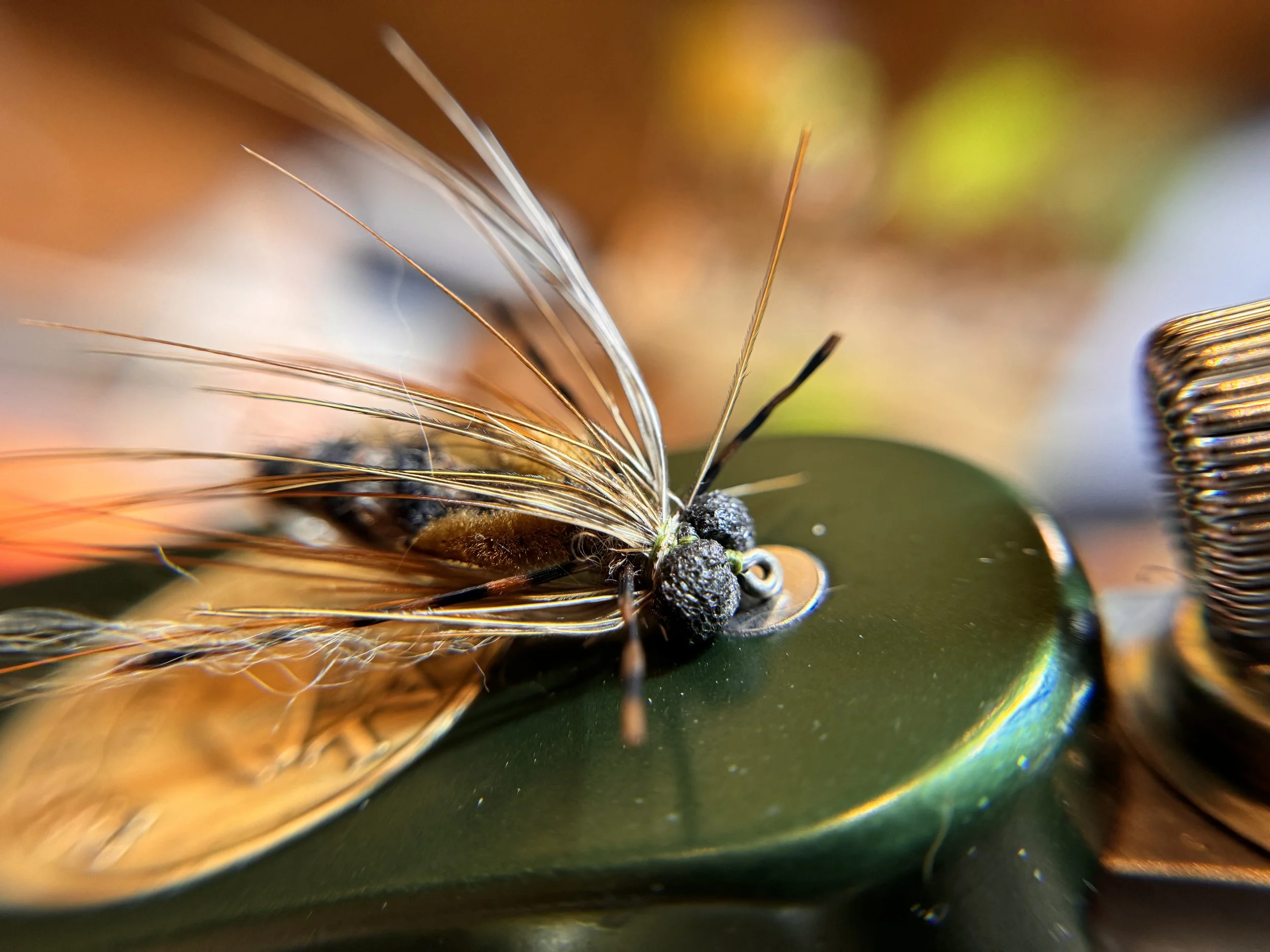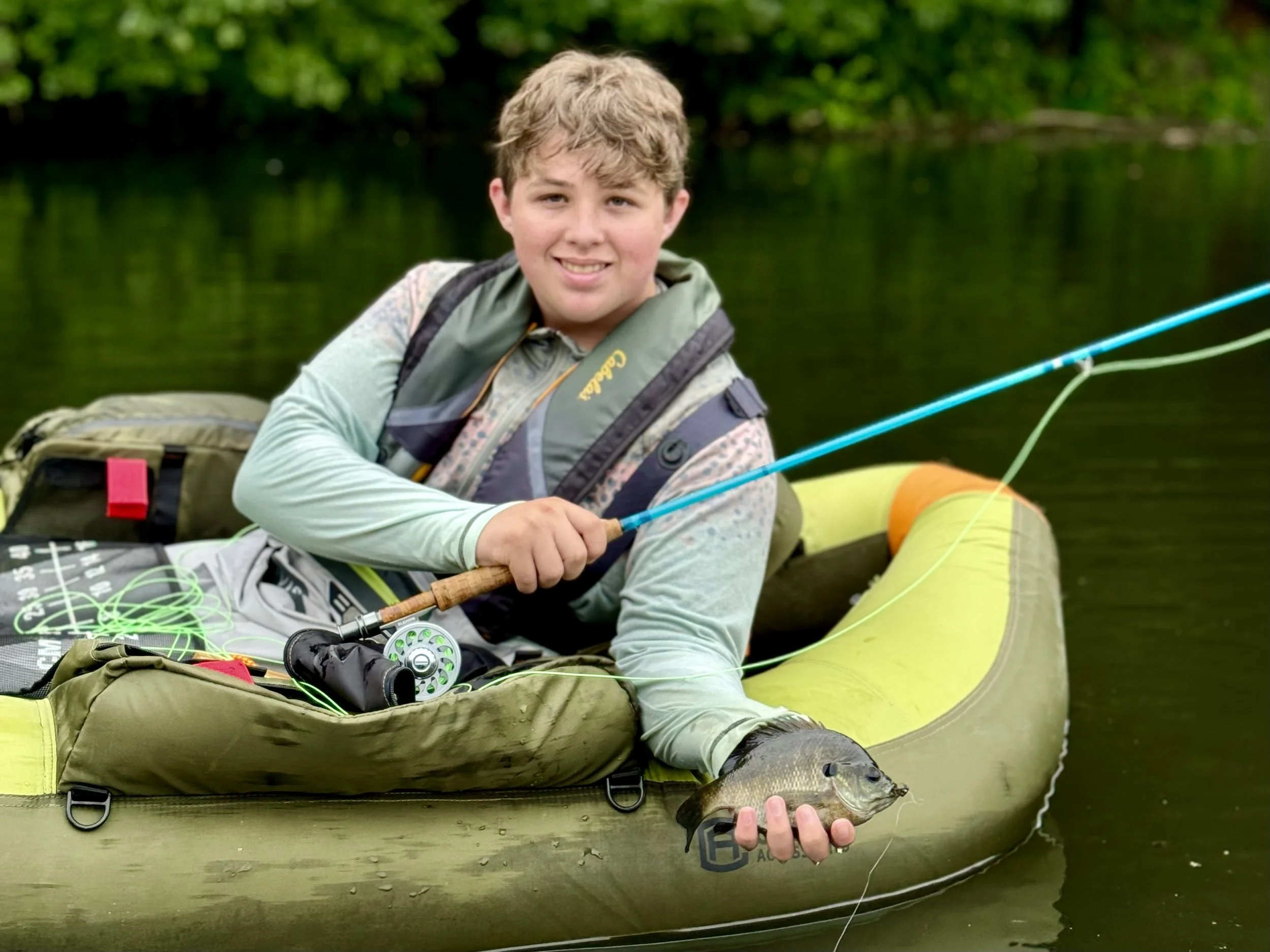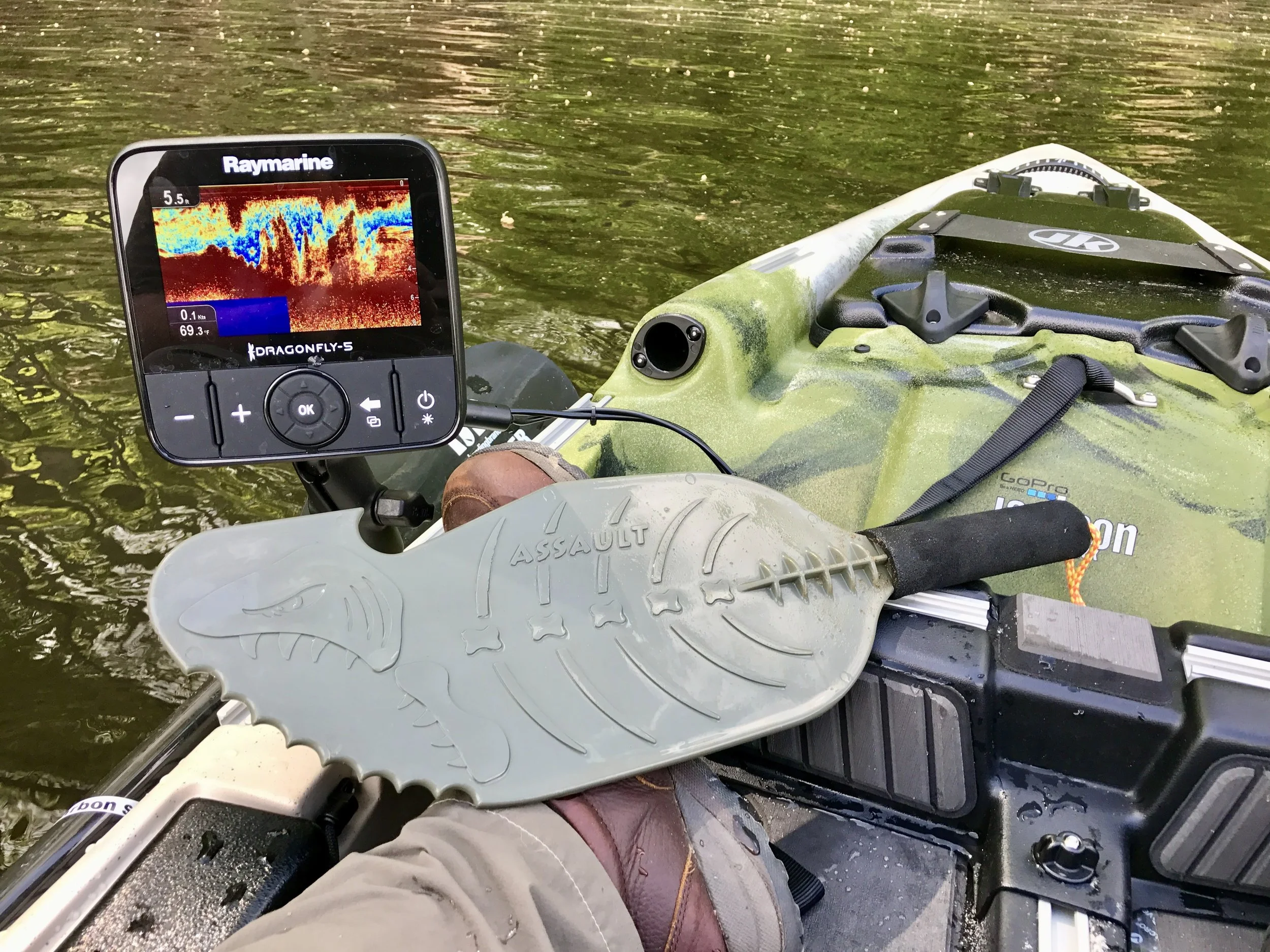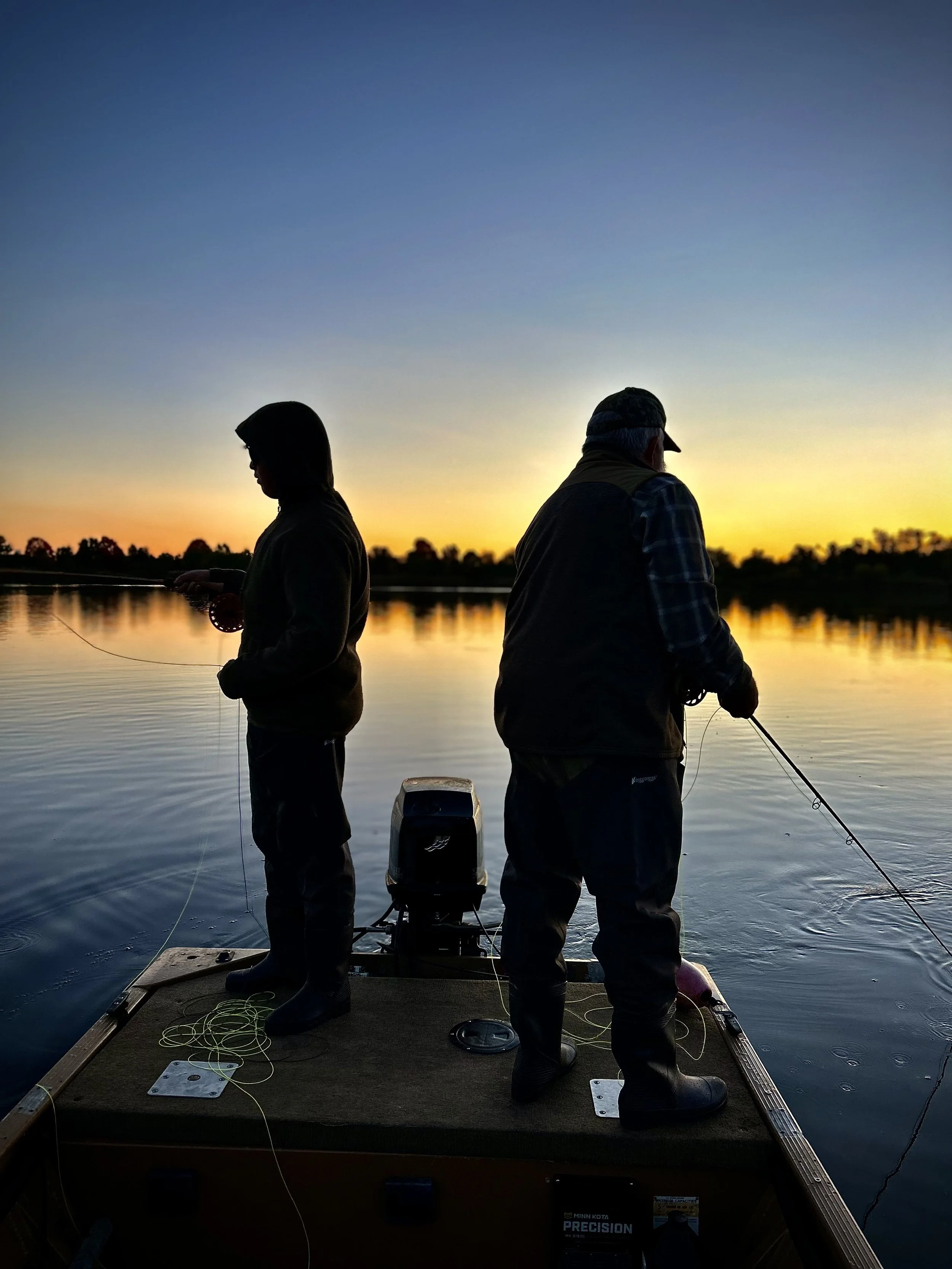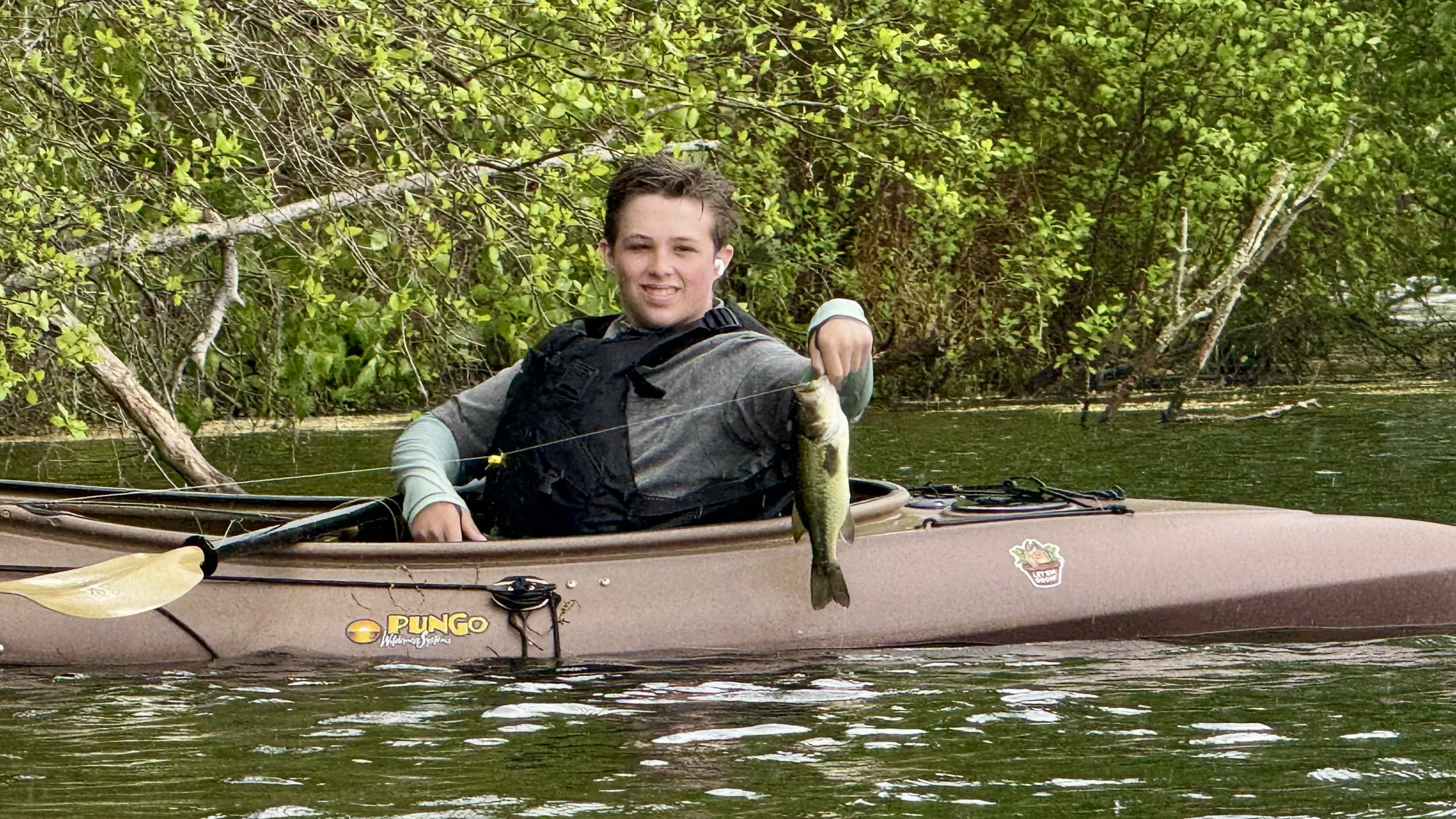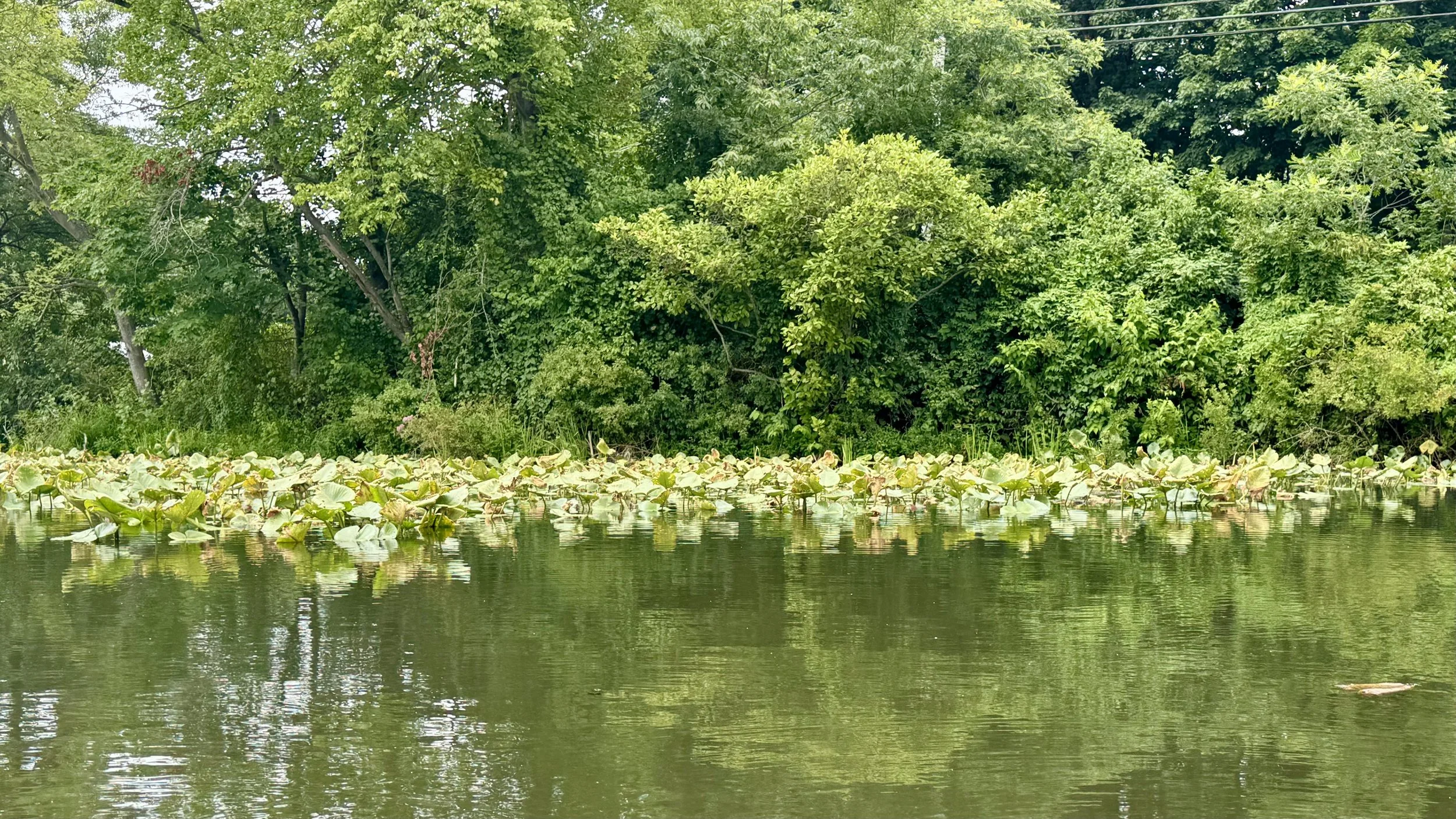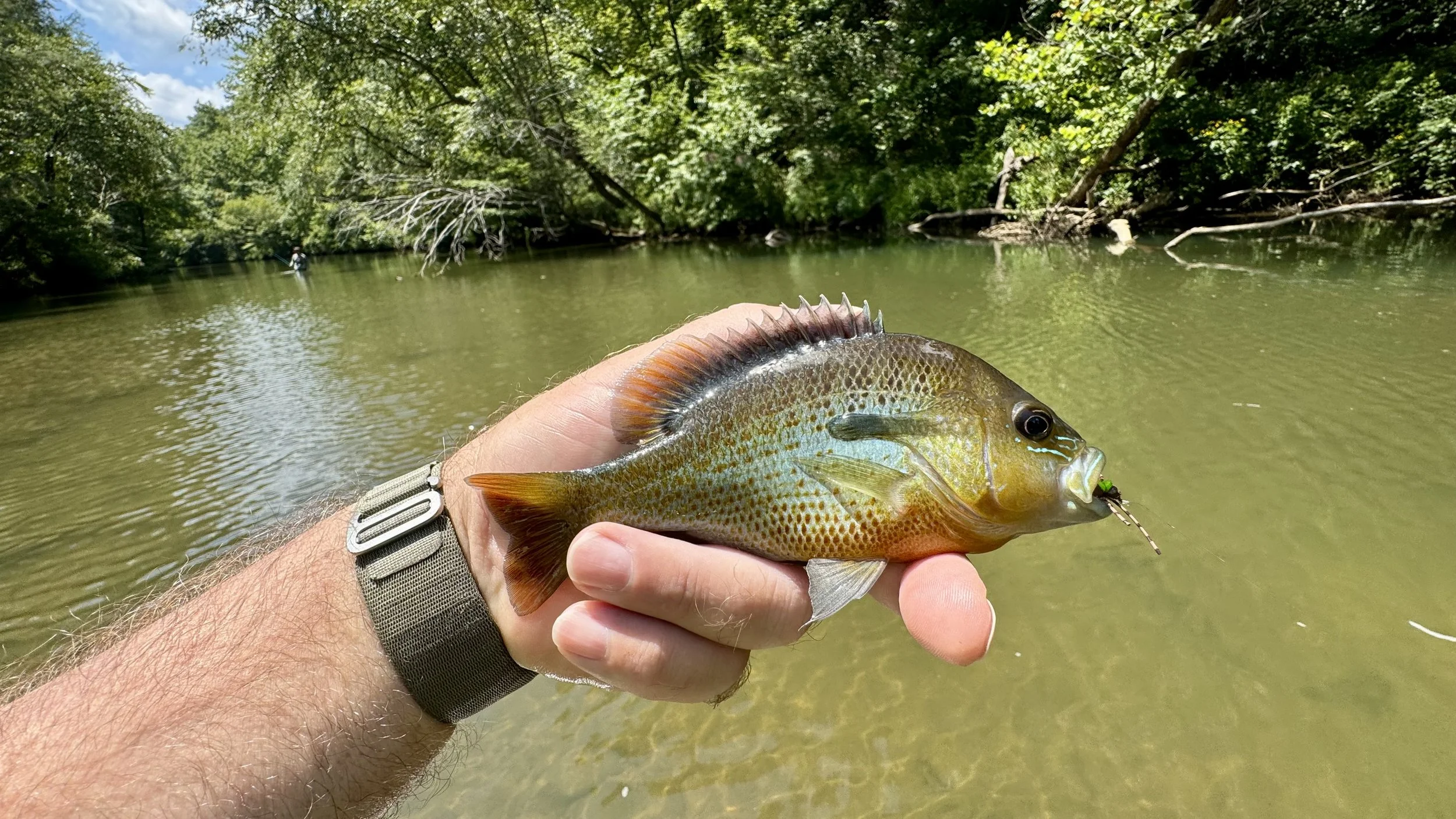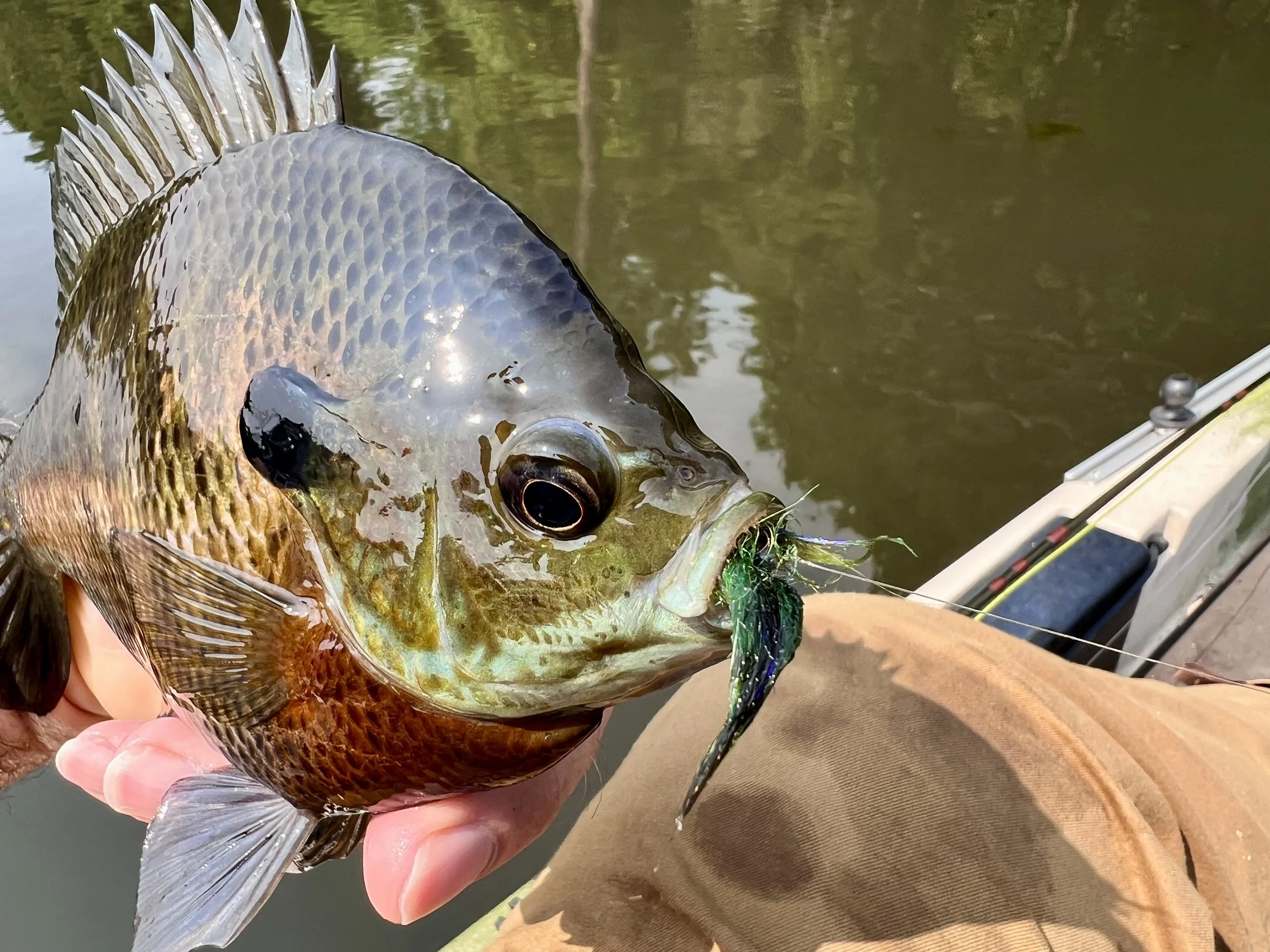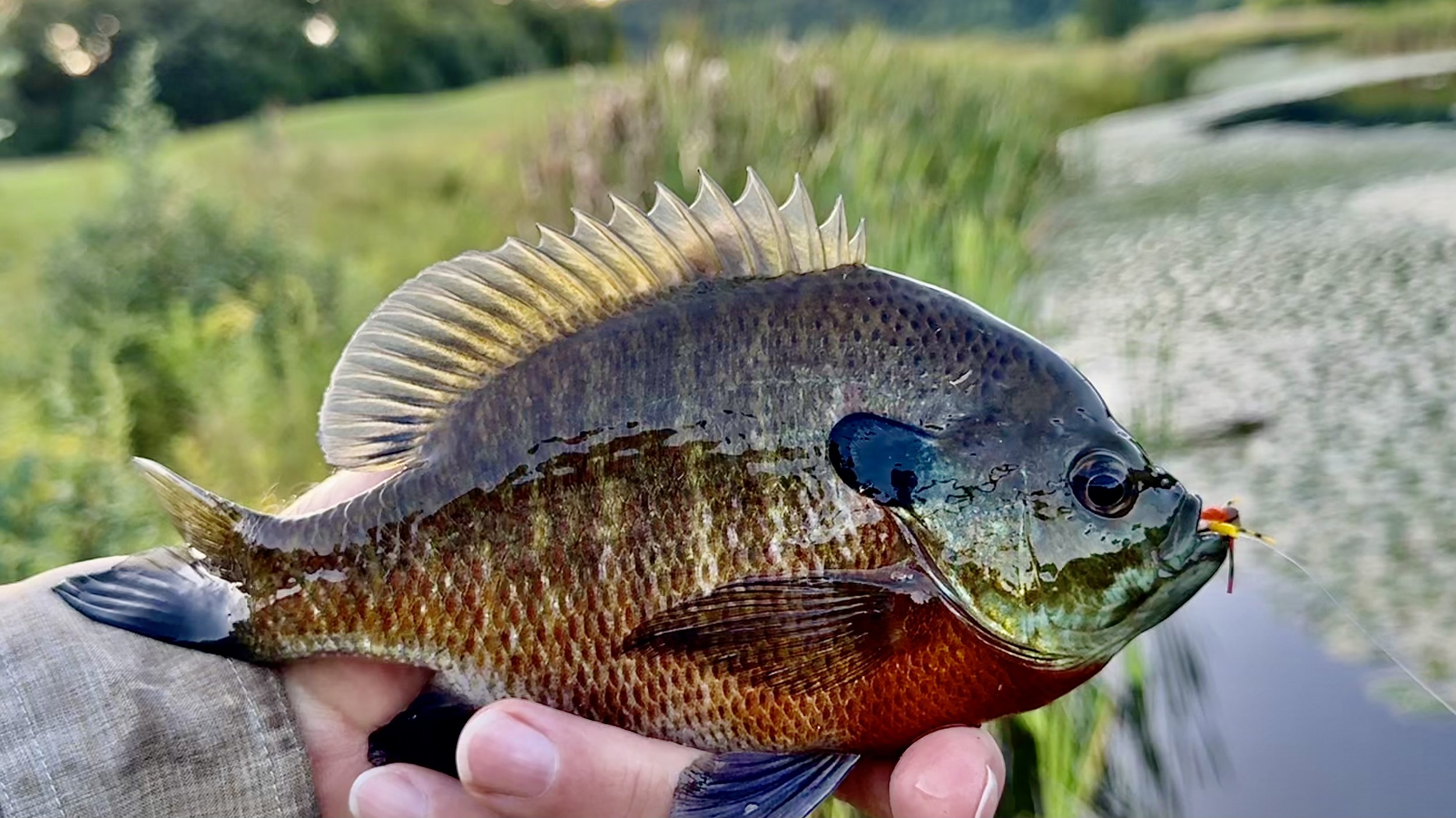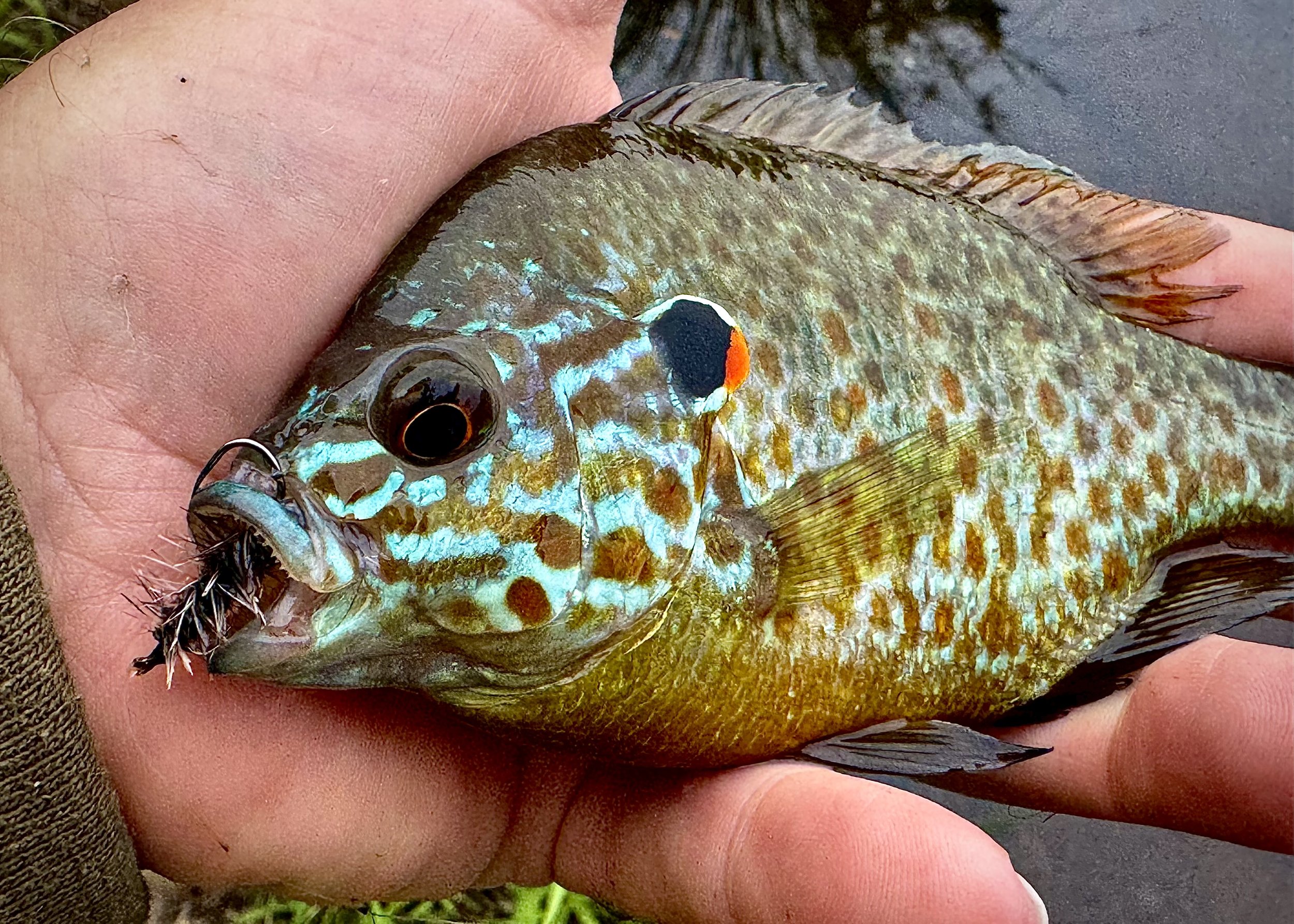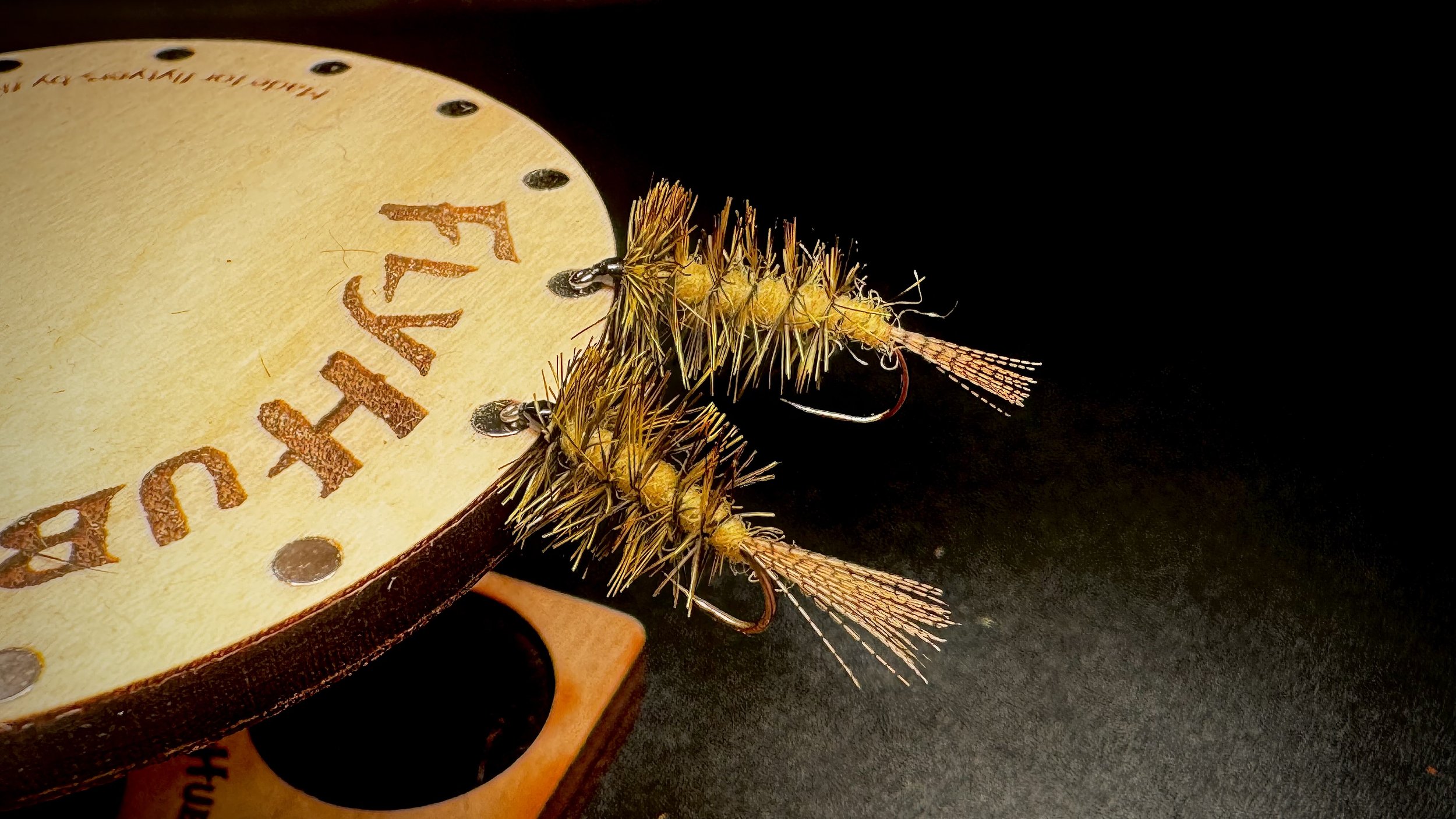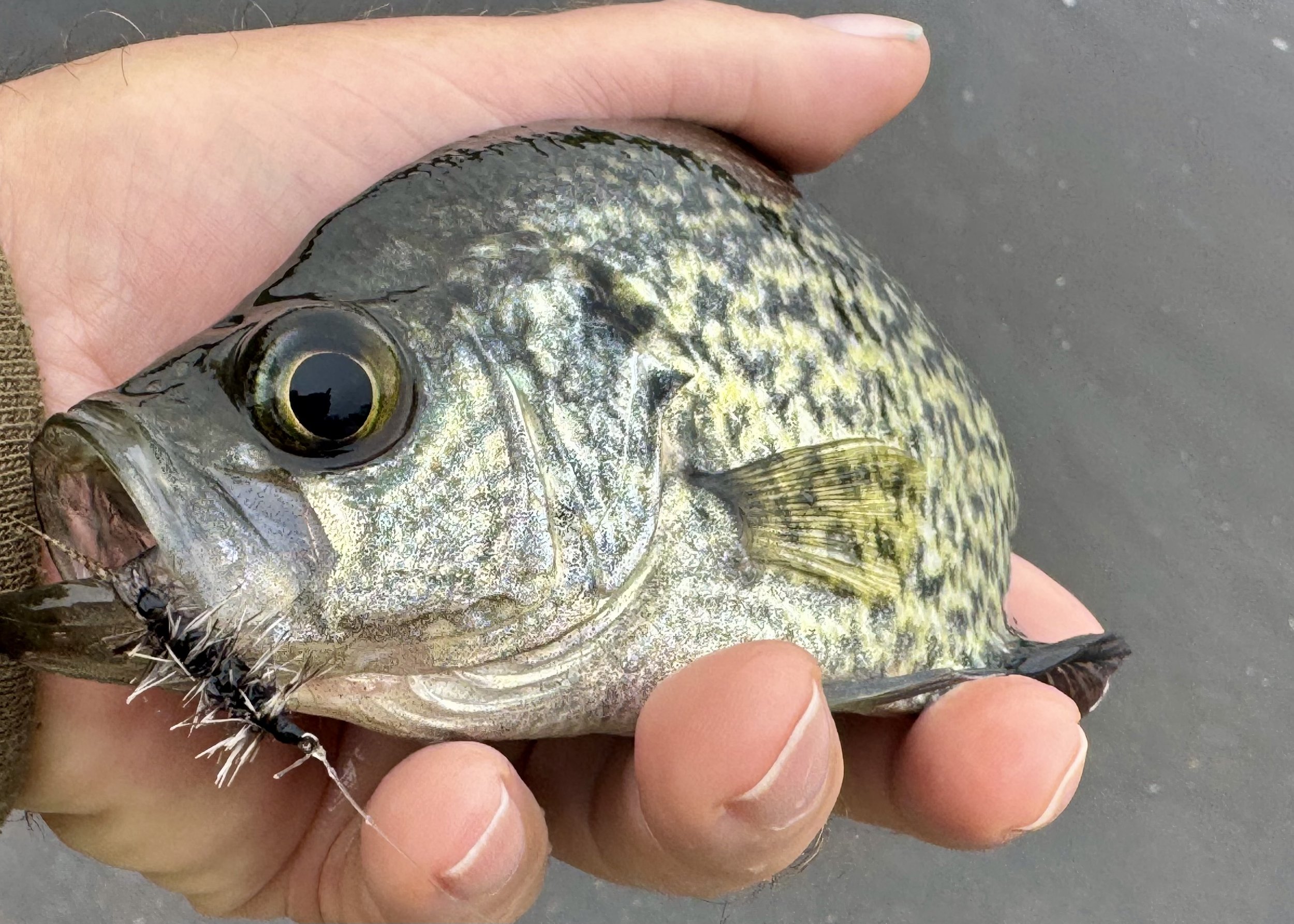Bluegills and other panfish are easy pickings on their spawning beds in the spring. That is how they get their reputation as being pushovers. Fly selection is not critical, and poor presentations will often still yield results. However, springtime doesn't last forever, and catching a trophy panfish can be challenging when the spawning season ends. While trophy-sized bluegills often let down their guard when focused on keeping their bloodline going, they did not get that big by accident. Outside of the spawning season, big bluegills can be a challenging quarry to chase with a fly rod.
A bluegill this size will put a smile on your face and a serious bend in your fly rod!
Few anglers don't smile ear to ear when fighting big bluegill on a light fly rod. These scrappy fighters know how to use their saucer-shaped bodies to full advantage and never seem to give up. So if you want to keep that three or four-weight fly rod bent to the cork this summer, here is how to do it.
A nice bluegill, caught by fishing a nymph in deep water
To Catch The You Have To Find Them - Go Deep
As the water warms and the shallows become choked with weeds, larger bluegills seek deeper water as the season progresses. They find relief from the blazing sun, stable water conditions with cooler water, and abundant food in deeper water. The largest panfish spend most of their time in deeper water, only entering the shallows to spawn. These fish can be found on the outside edges of weed beds, transition areas (changes in bottom composition), and deep water structures such as creek beds, drop-offs, sunken timber, rock piles, and artificial fish reefs.
Using weighted flies or intermediate /sinking fly lines will help you reach fish holding in deeper water. Try subsurface patterns like small streamers, wet flies, and nymphs. I prefer short, level leaders and unweighted flies when using sinking lines. Short leaders and unweighted flies keep the fly at the same depth as the fly line and can improve strike detection.
Fly line manufacturers don't typically make sinking fly lines for three and four-weight rods. Fishing with sinking fly lines is one of those times I will break out that five-weight for panfish fishing. You can find sink tip, intermediate, and full sinking lines for a five-weight, and big panfish will still put a respectable bend in these stouter rods.
A floating dragon fly nymph, like the one pictured here, fished on a sinking line can be deadly.
Targeting fish in deep water with a fly rod is one of fly fishing's more difficult challenges. Getting your fly down to the fish and detecting the light hit of a bluegill inhaling your fly is no easy task. Here are a few tips for fishing deep water:
Maintain a direct connection between you and the fly. Keep as much slack out of your line as possible - Keep your rod tip low to (or just under) the water's surface while retrieving the fly. By doing this, you will eliminate any excess slack line and be able to detect strikes better.
Watch your leader/line like a hawk. Often, you can detect the take of a fish by watching your line where it enters the water. Look for anything unusual and set the hook when you see something. You will be surprised how often you end up hooking a fish despite never feeling a thing. Practice this, and after a while, you will develop a "sixth sense" for visually detecting the take of a fish
Practice casting sinking lines. Sink tips, intermediate, and full sinking fly lines are cast differently from your standard weight-forward or double-taper fly line. Familiarize yourself with the differences in advance, so you are not flailing around on the water, trying to deliver your fly to the fish!
Alternatively, you can fish your subsurface patterns under an indicator. This common stream practice also works well in still water for presenting flies to fish holding in deeper water. Use a sliding indicator system to make casting easier when fishing deeper water. Balanced fly patterns are preferred when fishing under an indicator, as they offer a more natural profile
Leaving the bank behind will help you to access fish holding in deeper water.
Leave The Shoreline Behind
Unfortunately, we often must get off the bank to fish deep water effectively. Fishing from watercraft will give you better access to fish-holding water. It does not have to be fancy; a float tube, canoe, kayak, or johnboat will do the job.
A fish finder is a great tool for locating both fish and structures as well as giving both water temperature and depth readings.
Better Fishing Through Technology
On more than one occasion, I have received snide remarks from other anglers when they observe the expensive fish finder mounted on my kayak, especially when fishing a tiny farm pond. The fish finder's primary use is to locate deepwater fish and structure. Electronics take the guesswork out of finding fish and structure in deeper water.
The squirrel tail wing and rubber legs help slow the sink rate of the Brim Killer.
Slow Your Sink Rate
In the natural world, the things that fish eat seldom plummet rapidly towards the bottom. A fly that slowly descends through the water column does a better job imitating a fish's natural food than one that sinks quickly. Often, a fish will take a slowly sinking fly while ignoring those that sink quickly. If your heavily weighted flies are not doing the trick, fish a lightly weighted pattern that falls gradually. Slow down your presentation and watch that line for takes while the fly is sinking.
Fishing at dawn or dusk is a great way to beat the summer heat.
Fish At The Right Time Of Day
It has been said that the best time to go fishing is any time you can. I have never caught a fish from my couch! During the dog days of summer, fish can be sluggish and reluctant to take a fly in the heat of the day. Concentrate your effects early and late in the day. Get on the water before dawn or fish during the last few hours of the day. The fish will be more active during these times of the day, and you may even get some surface activity if you want to give those poppers a workout. If you can't get up early or stay out late, try to fish on cloudy days. The fish will be more active if they can find some relief from the blazing summer sun.
This bass took a nymph suspended below a topwater foam bug fished near a submerged fallen tree.
Try A Popper-Dropper Combo
We all like to fish topwater patterns for the exciting takes. Unless you are fishing early or late in the day, using a topwater fly may not be the best course of action. However, you can present two options simultaneously by suspending a subsurface fly like a nymph, wet fly, or small streamer beneath a topwater bug. Suspending a fly beneath a surface pattern allows you to fish effectively over subsurface weed beds without fouling your flies in the vegetation on every cast. Strike detection is also easier since an "indicator" floats above your subsurface fly.
Water lillies provide both shade and food for many fish species, especially panfish and bass. Those edges are perfect for popper/dropper rigs or a floating dragonfly nymph fished on a sinking line.
Get Down In The Weeds
During the summer, aquatic weeds can grow right up to the water's surface, making fishing difficult. These weed beds, especially the edges, are prime big bluegill habitat. Fish these areas with nymphs, wets, and small streamers. Try popper/dropper combos or fish under an indicator to present your flies just above the vegetation. A favorite fishing method for these edges is casting a floating dragonfly nymph on a long leader with a sinking line. The floating fly swimming just above the weeds or lake bottom is irresistible to big panfish.
Wet wading creeks and streams is a great way to cool off and discover new waters to fish.
Try New Waters
If you have trouble locating big panfish on large lakes and reservoirs, try fishing smaller lakes and ponds. In comparison, the fish will still be occupying deep water, but that deep water may only be 4 -8 feet deep in a pond instead of 20-30 feet deep in a larger body of water. Fish in these smaller bodies of water will be much easier to target with a fly rod. With fewer places to hide, you will locate fish quickly.
Many species of panfish, like this redbreast sunfish, thrive in moving waters.
A favorite method of fishing during the height of summer is wet wading creeks and rivers. Wet wading streams is a comfortable way to spend a hot summer day. Moving water is often cooler and contains more dissolved oxygen than still waters, which means you can often find good fishing during the hours when lakes and ponds seem to go dormant.
This bluegill has a size four streamer intended for bass stuffed into its mouth!
Go Big Or Go Home
A large panfish will have no problem eating a size six fly. I often catch big bluegills when fishing for bass on size four flies, sometimes as large as two! Many prey items that panfish rely on for food are larger at this time of year. These prey items include dragonfly larvae, leeches, crayfish, and young fish and minnows. Large nymphs, wet flies, and small streamers will produce the largest panfish. As a bonus, these flies also attract the attention of larger predators like bass.
Do you have a tip for summertime panfish on the fly? We'd love to hear it. Leave a comment below!

